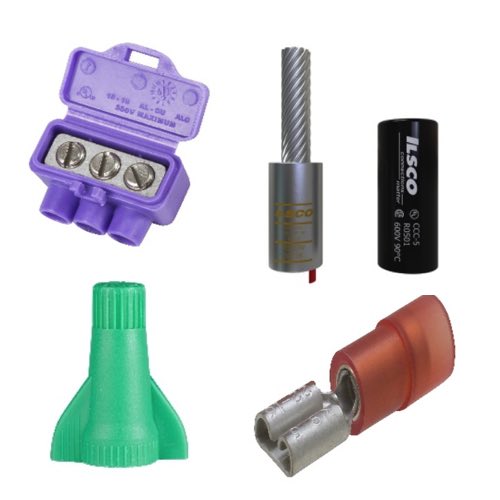Ilsco Wire Terminals

Ilsco wire terminals are designed to create secure, efficient, and durable electrical connections in many different places—industrial, commercial, and residential—that involve wiring. They are made with excellent materials and with a lot of attention to engineering detail, both of which serve to give them not only much conductivity but also much protection against the things found in many environments that can damage electrical connections—moisture, heat, and corrosion among them. They are also made for easy installation, which is a big deal in all kinds of wiring situations.
Ilsco offers a wide range of products, assuring that their wire terminals include ring terminals, spade terminals, butt connectors, and mechanical lugs. All of these and more are designed to withstand harsh conditions. But more than that, Ilsco provides not only copper connectors but also aluminum options for these wire terminals, ensuring that different wiring applications can find a secure fit. And whether the fit required is insulated or non-insulated, the wide range of specifications and connectors available means that Ilsco can provide a terminal that meets the requirements for exactly the application intended. All connectors can handle high loads. All can be crimped or compressed. And all will maintain secure connections because that is what these terminals were made to do.
Industrial Wiring Tips and Tricks
Wire Type
MTW is typically used in industrial control panels. The flexibility of the wire allows it to be easily maneuvered through wire ducting. THHN wire is commonly found in homes or commercial buildings. The rigidity of the wire makes it easier to pull through conduit. XHHW wire is similar to THHN but provides a more protective insulation.
Wire Color
The National Electrical Code (NEC) or UL are great points of reference when trying to decide what colors of wire to use. For example, UL standard states that a ground wire should always be green, an AC hot or live wire should be black and AC neutral should be white. These are just a few examples of UL code requirements.
Wire Size
A simple rule of thumb when selecting wire size is, the higher the current, the larger the wire. It is also important to consider the bend radius of the wire. If a wire is bent too sharply, the conductors within the insulation can be damaged.
Wire Connection
It is important to make sure that the wire is connected properly and that enough torque has been applied. If enough torque is not applied to the electrical connection, the wire can become loose over time resulting in a poor electrical connection. Too much torque can damage the the wire and electrical equipment.
Wire Labels
Labeling is essential when performing any kind of electrical wiring. Proper labeling will allow others to easily identify the function of a wire, where it is going and where it has been. It can also make troubleshooting on a panel or any electrical device much easier when worked on at a later date.

